The ho fan-style noodle is delicious in its simplicity and conceals a wealth of history beneath its chewy skin.
Ho fan is a Chinese rice noodle used primarily in Cantonese cuisine; it may also go by the names shahe fen or chow fun depending on the transliteration and the location where the dish is being served. Although Shahe, from which it derives its name, is now a part of Guangzhou’s Tianhe district, it is thought to have been the birthplace of the noodle style.
Ho fan is a very adaptable noodle, especially considering how light its flavor is. Making the noodles involves combining rice flour, water, salt, and cooking oil. The resulting dough is then cut into broad, thin strips that resemble wide tagliatelle. The noodles themselves are so light that they only add a fun, chewy element to a dish, absorbing the flavor of any meat they are cooked with.
Although the name may not be familiar to readers in the West, the noodles themselves undoubtedly are because they serve as the foundation of the widely renowned beef chow fun.
The noodle style’s birthplace, Guangzhou, is also known as Canton outside of China. Yes, this is the city where Cantonese cuisine originated. As a result of Cantonese immigrants’ early migration to regions like the western United States, the majority of Chinese cuisine in those regions is based on Cantonese recipes.
Readers who enjoy food may also be familiar with ho fan from Thai and Vietnamese cuisine. In fact, the Vietnamese staple ph uses a very similar type of noodle. Early 20th-century workers from the provinces of Guangdong and Yunnan are thought to have consumed a large amount of the modern ph dish because they noticed enough similarities between the Vietnamese soup and what they were used to back home. Even a Chinese immigrant owned one of the first two Ph stands in Hanoi.
Although there are practically endless uses for ho fan, the noodle excels in stir-fried foods. Ho fan stir-fries are known in Mandarin as chao fen and Cantonese as chow fun. Additionally, the noodles are also common in soups.
Despite being widely available in southern China and abroad, ho fan is less frequently seen on menus in the rest of China. The divide between wheat and rice is frequently cited as one of the biggest differences between northern and southern China. That is to say, while southern China prefers rice-based staples, northern China prefers wheat-based dishes as well, such as noodles and dumplings.
Hou An Rice Noodle in Hainan (海南后安粉汤 hǎi nán hòu ān fěn tāng)

Hainan Island, a tropical island off the southernmost tip of China, is known as the “Hawaii of the East.” It offers luxurious accommodations, numerous festivals and carnivals, long, beautiful beaches, and year-round warmth and sunshine. Hou An Town on Hainan Island served as the inspiration for the name of Hou An Rice Noodles. It is popular all across the island. A must-try local treat for visitors to Hainan, which is renowned for its delectable and fresh soups, is the Hou An Rice Noodle. Shrimp and ox and pig and ox bones are used to make the broth. An egg that has been boiled, spring onions, and pig intestine are some of the common condiments.
12 Most Common And Delicious Types Of Chinese Noodles
Let’s get straight to the main topic. To give you more choices when it comes to Chinese noodle dishes, I’m excited to share with you some of my favorite varieties of Chinese noodles. First of all, check this table for an overview.
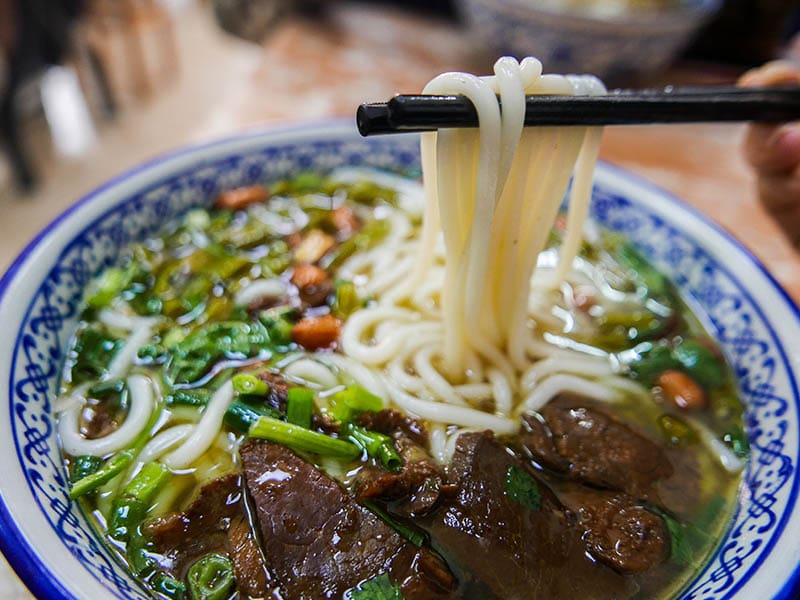
Popular in China and other Asian nations is lamaian noodle. Most frequently, individuals prepare it to create a delicious bowl of instant noodles. They also deep-fry it with meat and vegetables.
Lamian is made by stretching and folding the dough into strands, producing chewy and stringy noodles. The dough is made of wheat flour, salt, and water.
The noodles will be thinner as more people fold the dough. This excellent method came from Song Xu in 1504.
The style of making Lamian varies from region to region. To achieve uniformity, Lanzhou residents frequently apply more pressure to the strands and work quickly. Beijing chefs, on the other hand, favor doing it gently.
Lamian noodles are also used to prepare other Chinese dishes, like Tangmian (beef soup). It is used to prepare the well-known noodle dish chow mein. Lamian is used to prepare salads with diced cucumber and tomato.
Lamian also has a cultural significance. The Lamian restaurants in China are owned by Hui ethnic families, and they only serve Halal food, which does not contain pork.
Another Lamian variety, known as “Shandong Lamian,” is specific to the province of Shandong.
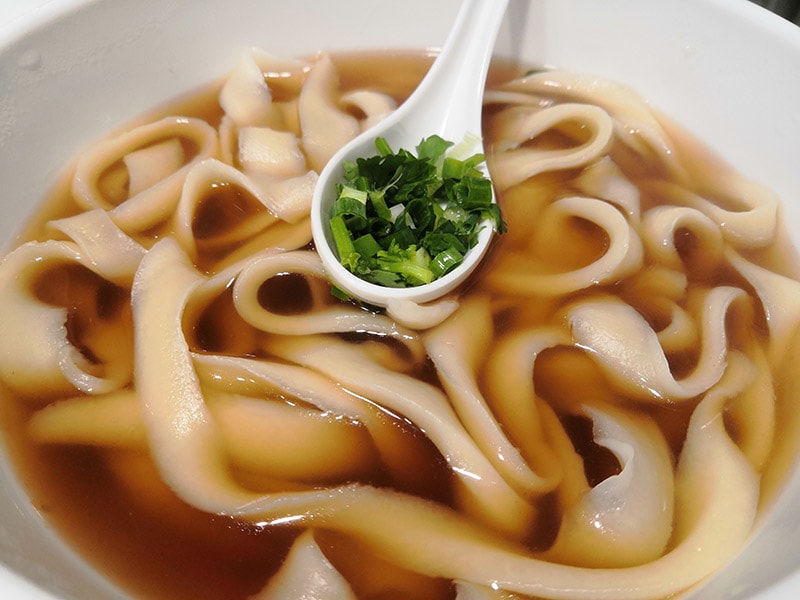
This noodle means “knife-cut noodles”. It is a delicacy of Shanxi province. The way people prepare it is amazing. The chefs cut a large dough into a lot of wide strands of noodles. They put the strands in a pot of boiling water.
Notably, their hands move very quickly. To make sure that everything goes according to plan, they always use sharp knives. Although the strands are not always uniform, they have a deliciously chewy flavor.
The cooks have excellent timing skills. Each strand must be left in the pot until it is time to eat. And did you know that Dao Xiao Mian noodles are among the best varieties of noodles to use when making ramen?
To see how delicate Dao Xiao Mian is, I advise you to try it at least once. In China, it is used to prepare soups and braised meat. A common ingredient in Uyghur dishes like stir-fried lamb and vegetables.
Dao Xiao Mian is much easier to prepare than you might imagine. Watch this video: How to Make Knife Cut Noodles.

Another name of Yi Mein noodles is “longevity noodles”. They play a significant part in Chinese celebrations like weddings, banquets for the lunar new year, and birthdays. This noodle symbolizes luck and prosperity.
Wheat flour, eggs, and soda water or sodium bicarbonate are used to make this noodle. The strands are a lovely shade of yellow and have a spongy, chewy texture. The cooks prepare the strands, deep-fry them, then dry and shape them into a cake.
You should be aware that after cooking, Yi Mein noodles are prone to becoming soggy. So make sure that you don’t overcook them. Before using them to make any dish, boil them for no longer than 3–4 minutes to ensure that they have the ideal spongy texture.
This type of noodle is also very versatile. It can be used to prepare your favorite Chinese dishes, including salads and soups. I enjoy adding my favorite meat and vegetables to it when I stir-fry.
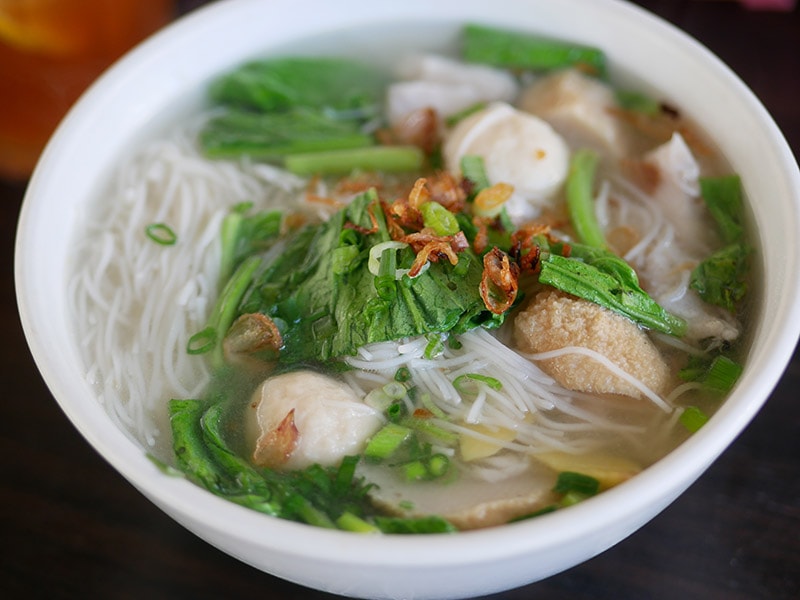
One of the most widely consumed varieties of noodles in China is this thin noodle. It originated in Southern China. In recent years, it has become more well-liked as a type of street food in Hong Kong, Taiwan, Malaysia, Vietnam, Indonesia, and other nearby nations.
Numerous well-known Chinese dishes use rice vermicelli. It comes in the form of fine, white strands because rice makes up the majority of it. They are light and chewy.
People use it to make Cantonese noodle dishes. Along with beef balls, fish balls, or fish slices, they cook it in a broth. It is the main component of Mixian, Luosifen, and Guilin noodles in Yunnan and Guangxi cuisine.
People use rice vermicelli to make soups and stir-fried dishes in Fuji and Teochew. There is usually a sauce accompanying it. Sometimes, people serve it without soup. They just stir it with other condiments.
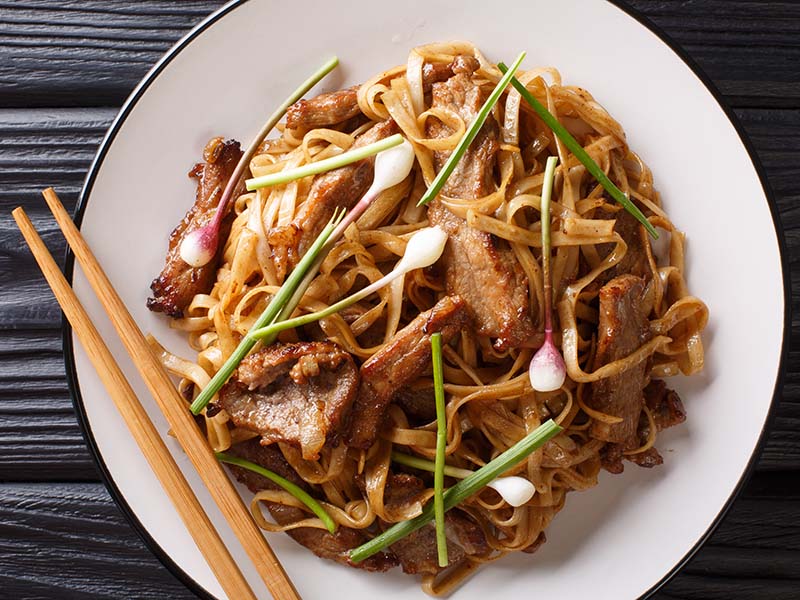
“Shahe Fen” or “He Fen” are other names for ho fun noodles. It came from the town of Shahe in Guangzhou. Other Asian nations like Malaysia, Vietnam, the Philippines, and Singapore are also very prone to it.
Ho Fun noodles are wide and flat, unlike most other varieties of noodles. The strands have a chewy and elastic texture. This noodle is available in fresh form. People display it in the form of sheets or strips. You can find it in the dried form.
Ho Fun noodles resemble “bánh ph,” a kind of noodle found in conventional Vietnamese cuisine. People use it to make soups and stir-fried dishes.
Ho Fun noodles are typically used to prepare the stir-fried dish “Chao Fen” or “Chow Fun.” It also consists of meat and vegetables.
The best way to prepare the traditional Chinese dish Chow Fun is with ho fun noodles. Watch this video: Beef Chow Ho Fun.
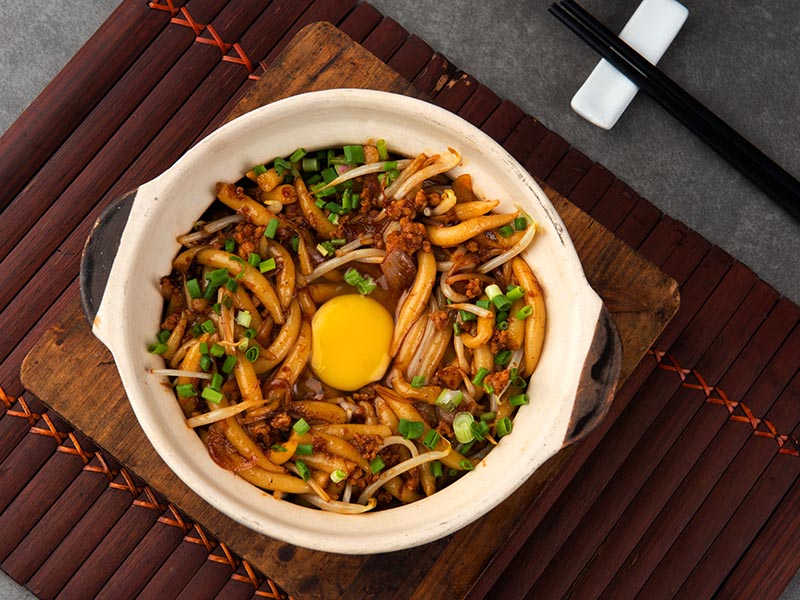
Most noodles are long, but Silver Needle noodles are not. They are very thick and only about 5 cm long. The strands are made of ground rice flour and water. The flour comes from either glutinous or non-glutinous rice. Some cooks use cornstarch to make them chewier.
Keep in mind that Silver Needle noodles are only offered fresh. You can purchase it directly from noodle vendors or from commercial products found in supermarkets.
A satisfying meal made with Silver Needle noodles can be served as a side dish, breakfast, lunch, or dinner in Chinese cuisine.
People use it to make noodle soup and stir-fried dishes. It is notably a component of the clay-pot dish “Clay-Pot Lao Shu Fen.”
Zunyi Mutton Rice Noodles (遵义羊肉粉 zūnyì yáng ròu fěn)

Strips of mutton from the hairy mountain goat raised for its meat and hair across the hills of Guizhou are used to make Yang Rou Fen (a Zunyi mutton rice noodle dish). This dish is very popular during the winter because locals think that mutton soup, which is served in a spicy broth, is a great winter remedy that keeps you warm. Extra chilies during the cooking process is optional. Rich and filling, yang rou fen is frequently consumed for breakfast in Zunyi and is a wonderful way to start the day. Since many businesses are open 24/7, it is also a well-liked midnight snack. Condiments such as pickled cabbage and radishes are added. The local proverb “Without eating sour food for three days, people will get weak legs” suggests that the people of Guizhou have a preference for sourness in their food. In the past, people in mountainous areas who lacked easy access to salt preserved vegetables with vinegar and other substances. Although there is no longer a salt shortage, the custom has persisted in the area. Guizhou people are known to make good pickles.
FAQ
What are the noodles called in Chinese food?
Mein or mian is simply the Chinese word for noodles. Chow mein or chao mian means “fried noodles,” while lo mein means “tossed noodles.” “.
What are the skinny noodles called in Chinese food?
Vermicelli Noodles are very thin white noodles, looking like straw. Vermicelli requires constant stirring and getting underneath the noodles because they tend to stick. We think they are really tasty and underrated. Try our chicken vermicelli recipe and see what you think!.
What are rice noodle dishes called?
Rice sticks or even rice thread are other names for the finer, more delicate varieties of rice noodles. Another well-known noodle soup made with rice thread or sticks is Vietnamese pho.
